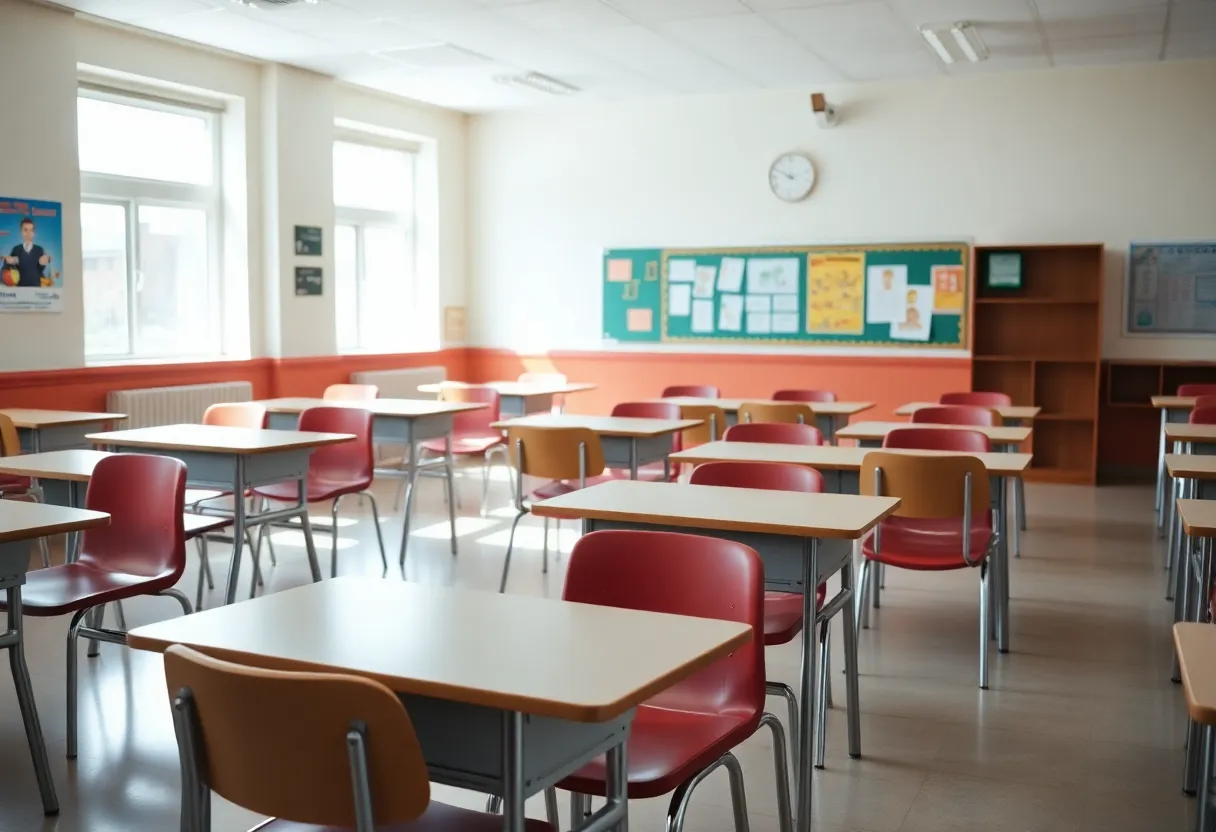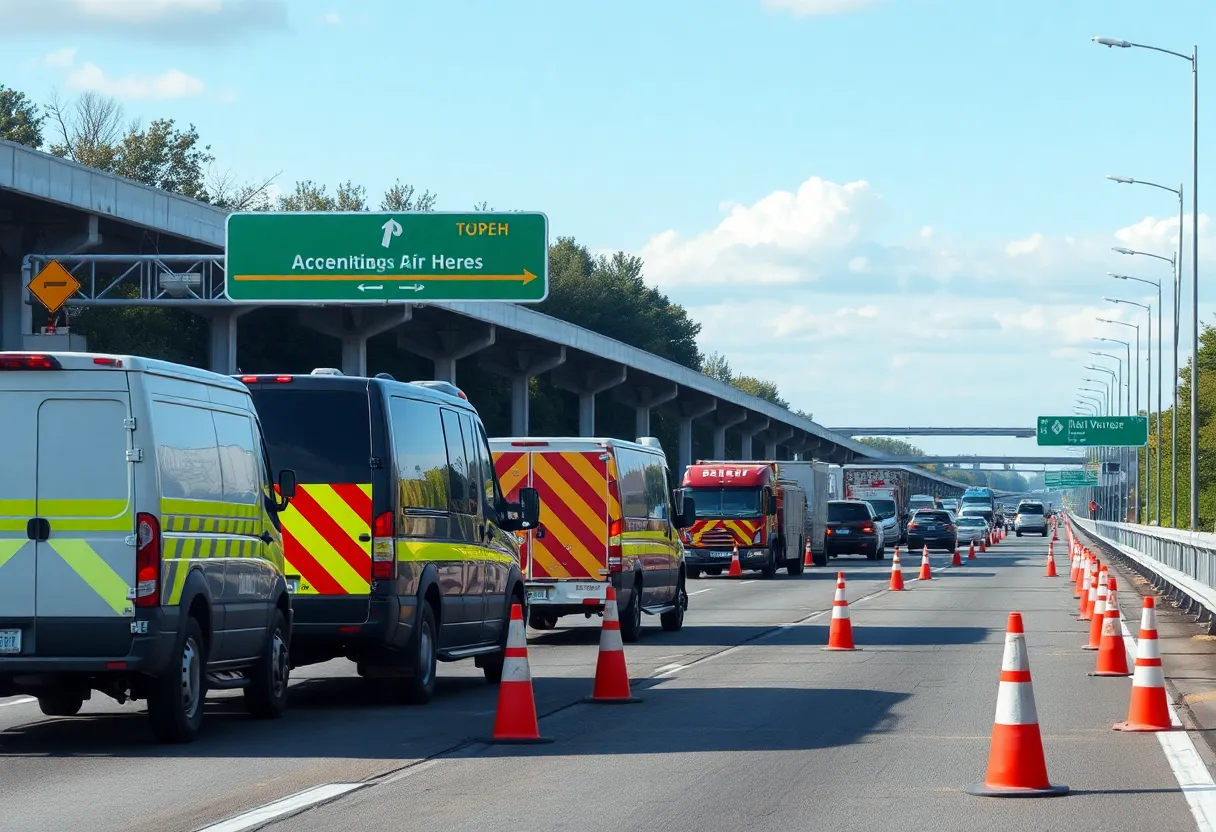News Summary
California’s K-12 public school enrollment has dropped for the seventh consecutive year, exacerbating financial challenges with districts like Santa Ana facing budget deficits. Enrollment is now down to 5.8 million, leading to staff layoffs and possible school closures. A loss of federal COVID funds and rising living costs contribute to declining numbers, while some districts consider consolidating campuses. Projected losses may reach one million students by 2031, highlighting systemic challenges in the education sector, especially for vulnerable populations such as homeless students.
Santa Ana, California – The ongoing decline in K-12 public school enrollment in California has reached a critical point, forcing school districts to confront significant budget deficits and in some cases, layoffs and school closures. Current data reports that total enrollment in California’s public schools has fallen for the seventh straight year, bringing the number of students down to just over 5.8 million, a steep decline from 6.2 million over the past decade.
The Santa Ana Unified School District is a prime example of the challenges faced by many districts across the state. Currently grappling with a staggering $154 million budget deficit, the district has reported a 28% decrease in student enrollment compared to a decade ago, leading to the decision to lay off approximately 262 staff members, including teachers and counselors. This drastic measure underscores the severe financial challenges that are now commonplace in various California school districts.
A key factor in these financial difficulties is the loss of federal COVID bailout funds, which came to an end last fall. Such funding had temporarily alleviated budget constraints, but with its cessation, districts are increasingly struggling to maintain financial stability. California’s public schools rely heavily on funding sourced from state income taxes, property taxes, and sales taxes, all of which are directly influenced by student enrollment numbers.
The implications of declining enrollment extend beyond just budgetary concerns; they are creating broader systemic challenges for schools throughout the state. Many districts are contemplating reductions in staffing and even school closures as a result of dwindling student populations. Schools are being left half-empty while administrators attempt to keep their budgets in line with reduced funding streams, all without the ability to decrease staffing costs sufficiently.
Recent statistics unveil some contrasting trends amidst the overall decline in California’s public school enrollment. Notably, there has been an increase of nearly 1% in students from low-income families, along with a significant rise of over 9% in the number of homeless students attending public schools. Today, more than 230,000 students in California public schools are classified as homeless, highlighting a critical need for support and resources for this vulnerable population.
Reasons for the declining enrollment trends are complex and multifaceted. Factors include lower birth rates—the national fertility rate currently stands at 1.6 children per woman, below the replacement rate of 2.1—as well as the lingering effects of the COVID-19 pandemic, families moving out of state, and a growing preference for private education or homeschooling. Additionally, California’s high cost of living continues to push families to seek alternatives to traditional public schooling.
Projected Future Trends
Looking ahead, the California Department of Finance has projected even more alarming figures, estimating that the state could lose another one million public school students by 2031 if current trends persist. This potential reduction in student numbers threatens to exacerbate the financial woes of school districts already scrambling to manage their budgets under the weight of declining enrollment.
Responses from Local Districts
In light of these challenges, districts like Saddleback Valley Unified School District and Anaheim Union High School District are actively exploring options for school closures and consolidation of campuses to adapt to shifting enrollment statistics. Meanwhile, school districts in cities like San Francisco and Oakland have faced substantial resistance to proposals for similar closures, leading to pauses in such plans for the immediate future.
The ongoing declines in public school enrollment, coupled with the end of federal pandemic aid and diminished state tax revenues, have prompted cuts to educational programs and services, impacting the quality of education provided. Los Angeles Unified School District, for instance, has witnessed a significant drop in enrollment, plummeting from 747,009 in 2003-04 to just 387,152 this year, marking nearly a 30% decrease since the 2016-17 school year. While transitional kindergarten (TK) enrollment increased by 17% to 177,570 students, it remains below Governor Gavin Newsom’s goal of reaching 400,000 TK students by the 2025-26 school year, highlighting challenges even in growth areas.
As California public schools grapple with these challenges, it is crucial to recognize the significant educational hurdles faced by unhoused students. They are particularly vulnerable to high dropout rates and chronic absenteeism, calling for targeted interventions to prevent the widening achievement gap. The future of California’s public education system hinges on addressing these declining enrollment trends and the financial ramifications they produce.
Deeper Dive: News & Info About This Topic
HERE Resources
California Faces Job Crisis as Hollywood Production Slumps
Additional Resources
- Los Angeles Times: California Population Change Reveals Harsh Reality for Education Funding
- SCV News: Annual Enrollment Data Shows Slowing Decline in School Enrollment
- San Francisco Chronicle: California Public Schools Stop Losing Students
- The Center Square: California Education Trends and Statistics
- AOL: California School Enrollment Continues to Drop
- Wikipedia: Education in California
- Google Search: California public school enrollment
- Encyclopedia Britannica: Education
- Google News: California school enrollment

Author: STAFF HERE COSTA MESA WRITER
The COSTA MESA STAFF WRITER represents the experienced team at HERECostaMesa.com, your go-to source for actionable local news and information in Costa Mesa, Orange County, and beyond. Specializing in "news you can use," we cover essential topics like product reviews for personal and business needs, local business directories, politics, real estate trends, neighborhood insights, and state news affecting the area—with deep expertise drawn from years of dedicated reporting and strong community input, including local press releases and business updates. We deliver top reporting on high-value events such as the OC Fair, Concerts in the Park, and Fish Fry. Our coverage extends to key organizations like the Costa Mesa Chamber of Commerce and Boys & Girls Clubs of Central Orange Coast, plus leading businesses in retail, fashion, and technology that power the local economy such as Vans, Experian, and South Coast Plaza. As part of the broader HERE network, including HEREAnaheim.com, HEREBeverlyHills.com, HERECoronado.com, HEREHollywood.com, HEREHuntingtonBeach.com, HERELongBeach.com, HERELosAngeles.com, HEREMissionViejo.com, HERESanDiego.com, and HERESantaAna.com, we provide comprehensive, credible insights into California's dynamic landscape.





